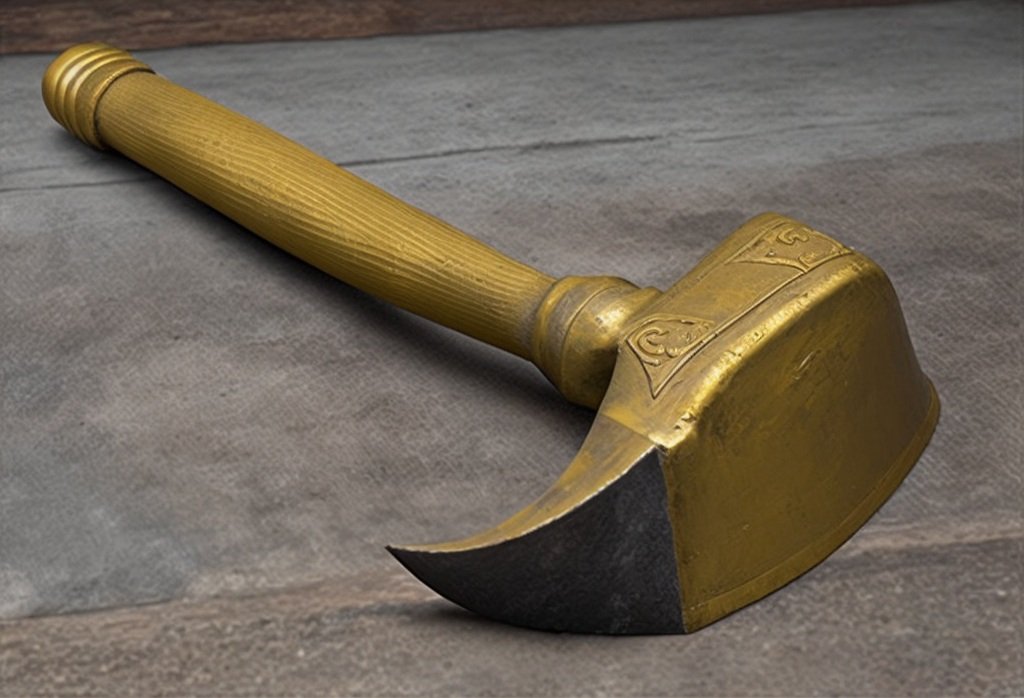
Reality Shards
Project policy is quite clear: reality shards are to be isolated in the Duncorne Foundation or Granite Peak, not used in field conditions ... But if the PCs do keep them around, hidden off the books and used only in emergencies, well, who can blame them?
Kenneth Hite
GURPS Horror: The Madness Dossier
Classification
SANDMAN’s method for classifying reality shards (sometimes called “pragmaclasts,” “anomalous objects” or “asynchronous fragments”) originates with the Duncorne Foundation in the late nineteenth century. Though modified somewhat over the past several decades, the general "structure" of the system remains the same.
Reality shards are, first, sorted into three broad categories: minor, significant, and major. Each category corresponds with the Ionian base-10 numbering system. That is, minor reality shards are classified on a scale of 1 to 9; significant reality shards are classified on a scale of 10 to 90; and major reality shards are classified on a scale of 100 to 900. Obviously, what distinguishes minor reality shards from significant reality shards, and significant reality shards from major reality shards, is often a contentious issue among the researchers, librarians, archivists, and historians at SANDMAN.
Once sorted by category, reality shards are then “ranked” on a scale of 1 to 9 (or 10 to 90, or 100 to 900) based on their historical and cultural qualities and perceived age as dated backward from the present day, as follows:
1, 10, 100 ... A reality shard that looks like it came from present-day (or future!) History A.
2, 20, 200 ... A reality shard that looks like it came from the past 10-100 years of History A.
3, 30, 300 ... A reality shard that looks like it came from the past 100-500 years of History A.
4, 40, 400 ... A reality shard that looks like it came from the past 500-1000 years of History A.
5, 50, 500 ... A reality shard that looks like it came from within 500 years of the Ontoclysm.
6, 60, 600 ... A reality shard that looks like it came from before the Ontoclysm/History B but with mostly History A features.
7, 70, 700 ... A reality shard that looks like it came from before the Ontoclysm/History B but with some History A features.
8, 80, 800 ... A reality shard that looks like it came from before the Ontoclysm/History B but with few History A features.
9, 90, 900 ... A reality shard that looks like it came from before the Ontoclysm/History B but with no History A features.
These categorizations and rankings result in each reality shard receiving a “classification” corresponding with the appropriate letter of the Greek alphabet, using the alpha-numerical chart provided below. Thus, a minor reality shard that is approximately 90 years old in History A would be classified and catalogued as beta (β). A truly ancient and major reality shard might be classified as sampi (ϡ). Excalibur would be a phi (Φ).
Suffice to say assessment on the y-axis – i.e., age-provenance and ontological rankings – is far more subjective than the x-axis – the minor, significant, major categorization – which has resulted in near-constant arguments and re-orderings over the past century, especially with respect to the transition from Duncorne to SANDMAN. Whole papers have been written on the subject of reality shard classification.
Over time, this has given rise to "heretical" cataloguing systems unique to particular regions of the world and interdepartmental rivalries so opaque almost no one understands them anymore. There is one school at Granite Peak, for example, that does things strictly using a modified version of the 1-9 scale, which they invented in the ‘30s or ‘40s right when Duncorne became SANDMAN and things started getting standardized. Another school of thought from the reality archeologist department has a 200-point assessment based on artistic features, materials analysis, historical influences, etc. that they use to determine whether something is an alpha or a theta. And, naturally, there are rumors of pragmaclasts so bizarre, so strange and other-worldly, that they defy all attempts as classification.
Usage
Using a reality shard adds 1d points of Corruption per use. For “always on” effects, add 1 point of Corruption per week of game time and 1d-1 points for every major “on screen” use.
House rule: Minor pragmaclasts — often consumable, short-duration, or low-level effect reality shards — only cost d6-3 Corruption to use. Major pragmaclasts may cost as much as 2d Corruption to use, especially if they have very powerful effects (see the description of The Redgrave Cassette for an example).
Catalogue
The Altamont Object
The Atlantean Cultural Mission Plaque
Cosmopolitan (Vol. XLIII)
Beth-El
Computer-Aided Design Glyphs
Downer Ranch Wild Berry Jam
Enemy Glyphs (Seized)
The Golden Throne
The Houdini Cassette
The Ikenga Tapestry
The MARPA Memory Gun
Pascagoula Gagkula Barb
The Mattock of Enlil
The Norton Coin
The Patent Medicine Bottle
The Redgrave-Ningishzida-Caduceus Statue
The Redgrave Cassette
The RFK ‘72 Posters
The Zebulun Tapes





















